Ground Nesting Bees – Friends or Foes of Your Lawn?
Did you know a large number of the world’s bee species are Ground Nesting Bees? While honey bees are incredible and provide very important services to the planet, there are so many other different species of bees, like Groundnesting Bees. These bees do not collect honey, but they are amazing pollinators.
They typically nest in gardens and are very docile. Ground Nesting Bees are crucial pollinators, which is why if you want to remove them, you should do it in the most eco-friendly way possible. Continue reading to learn more about Ground Nesting Bees and how to encourage them to move on without causing them or the planet any harm.
What Are Ground Nesting Bees?
When you hear bees, you likely think of the fuzzy black and yellow insects buzzing around the skies.
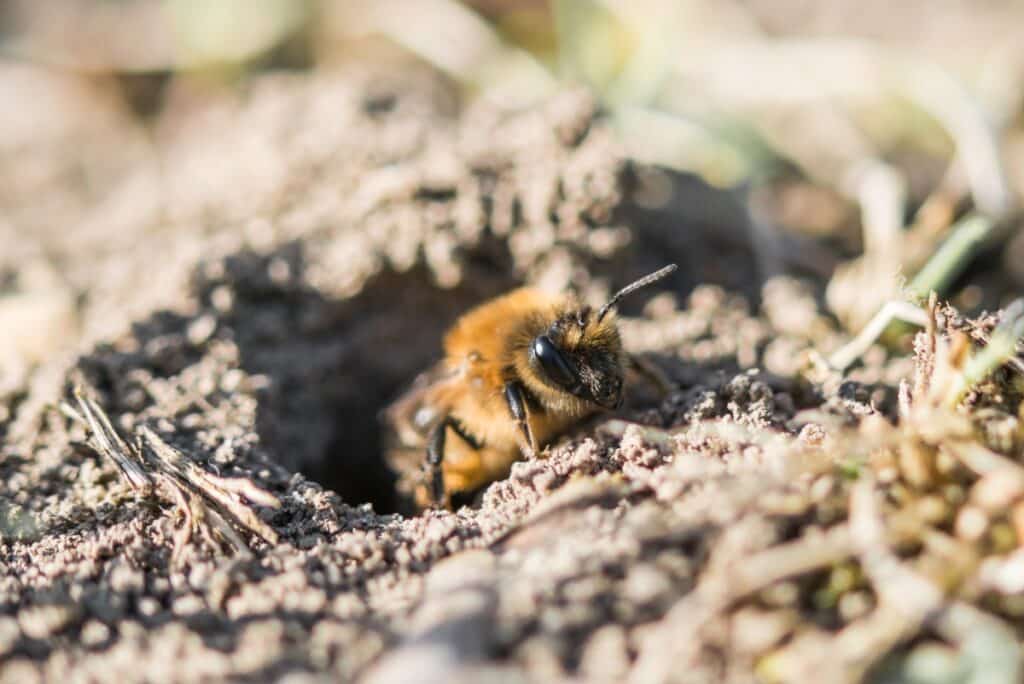
However, an incredible 70 percent of the world’s 20,000 bee species live primarily solitary lives and lay their eggs in underground nests. That’s right, there is a universe of bees under your feet.
Are Ground Nesting Bees a Thread to Your Yard?
Ground Nesting Bees have nests on the ground with entrances that go a few inches across. It is important to note that they cause no harm to soil or grass. Despite what you may believe, they work at improving the soil and grass.
This is because their nests act as aeration holes. Therefore, the nests enhance the penetration of nutrients and water. After some time, the nests are abandoned by the bees. This generally occurs after the spring nesting season. The soil then washes back into place thanks to the rain.
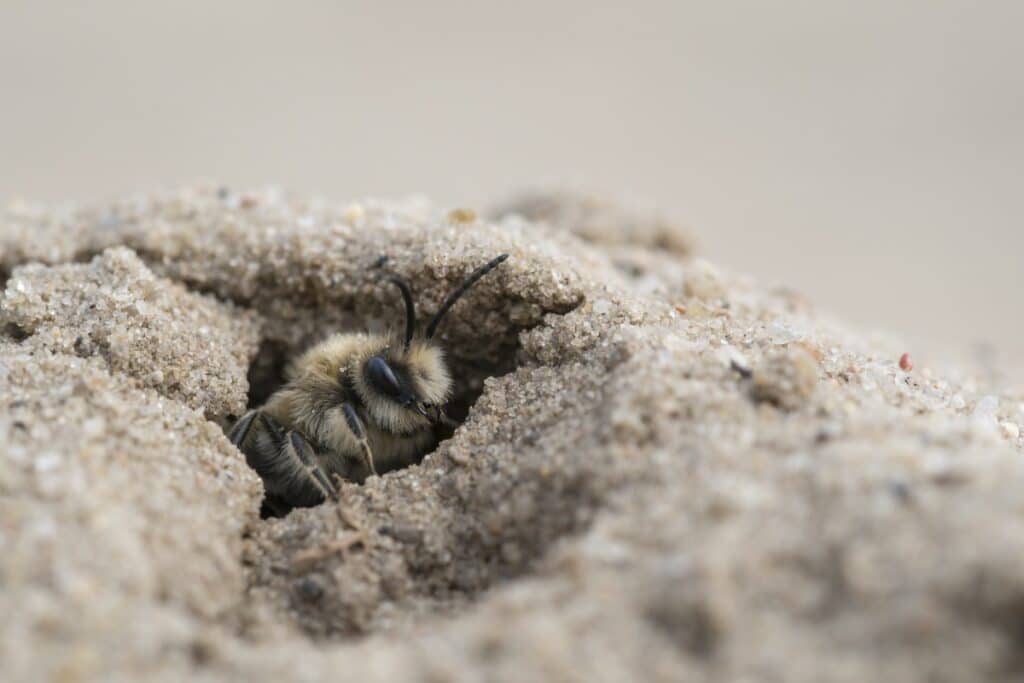
This means all signs of the nest disappear. With all of this in mind, the presence of Ground Nesting Bees in your garden is more a nuisance than a genuine threat. They typically like to nest in areas with well-drained, sandy soil and minimal vegetation.
Where they are deemed an issue is usually in gardens with much bare ground or sparse lawns. Occasionally, there might be a colony of bees nesting on a lawn. However, the reality is often that individual bees are attracted to the area due to something as simple as favorable soil conditions.
Are Ground Nesting Bees Aggressive?
Similar to other types of bees, Ground Nesting Bees are active foragers of pollen and nectar from flowers. This makes them rather beneficial pollinators. The queens do not defend their nesting areas.
They are rather docile and typically do not sting. This means they are little threat to people. The males, by contrast, typically patrol an area females seeking mates have inhabited. Therefore, they can be quite active and even aggressive. However, they do not have a string, making them harmless.
Do Ground Nesting Bees Produce Honey?
While Ground Nesting Bees are exceptional pollinators, they do not produce honey. The incredible role of producing honey is a role solely owned by honey bees.
Most Common Types of Ground Nesting Bees?
There are many different kinds of Ground Nesting Bees. The most common and well-known Ground Nesting Bees include the Africanized Bee, the Sweat Bee, the beloved Bumblebee, the Miner Bee, the Mason Bee, and the Long-Horned Bee.
Identifying Ground Bees vs. Yellow Jackets
Ground Nesting Bees and Yellowjackets are often confused, but they are not the same. While it can be hard to differentiate the two species, they do have some differences you should take note of. Where traditional bees have a hive, yellowjackets typically build these paper-like nests inside walls or in underground holes.
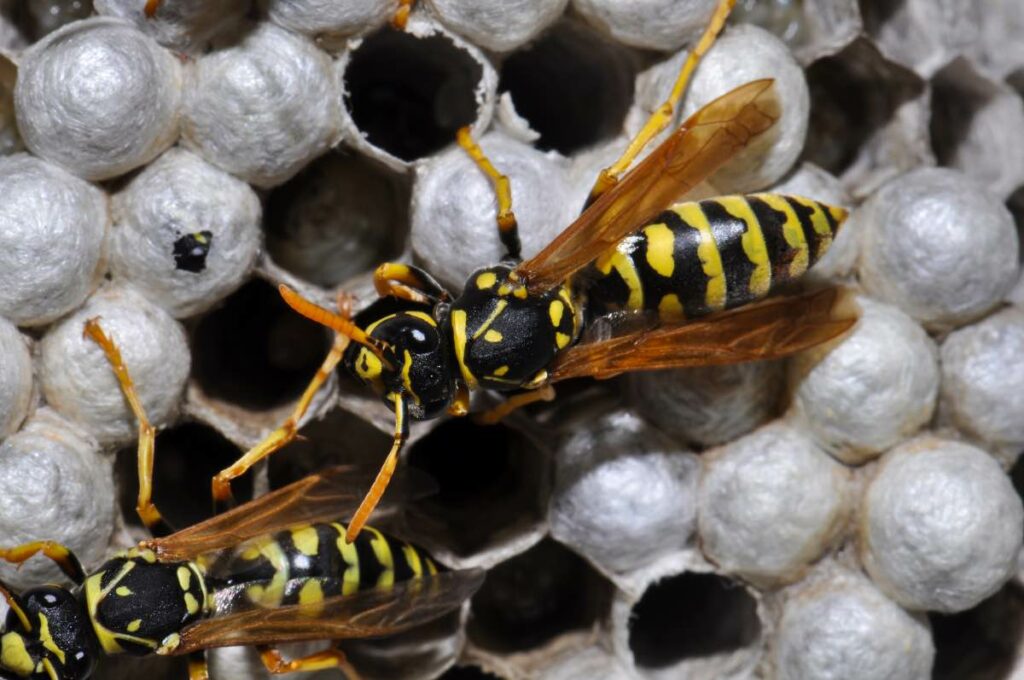
A colony of yellowjackets can include thousands. Yellowjackets create paper nests that often contain thousands of adult and larvae workers. These nests are often underground in abandoned enclosed spaces or rodent burrows. These can include wall cavities, tree cavities, dense ivy, and wood piles.
Young queen yellowjackets find protected areas and mate during the Autumn months. They stay here for the entire winter season. Another defining difference is that Yellowjackets are much more aggressive than other stinging insects. They can bite and sting. What’s more, even when they do sting, they do not lose their stinger.
This means they can sting multiple times, and they often sting even when they have not been provoked. Yellowjackets are also carnivorous and wouldn’t be considered to be good pollinators like Ground Nesting Bees. Yellowjackets have been found to poach honeybees’ hives to take advantage of the sugar when their food supply runs low.
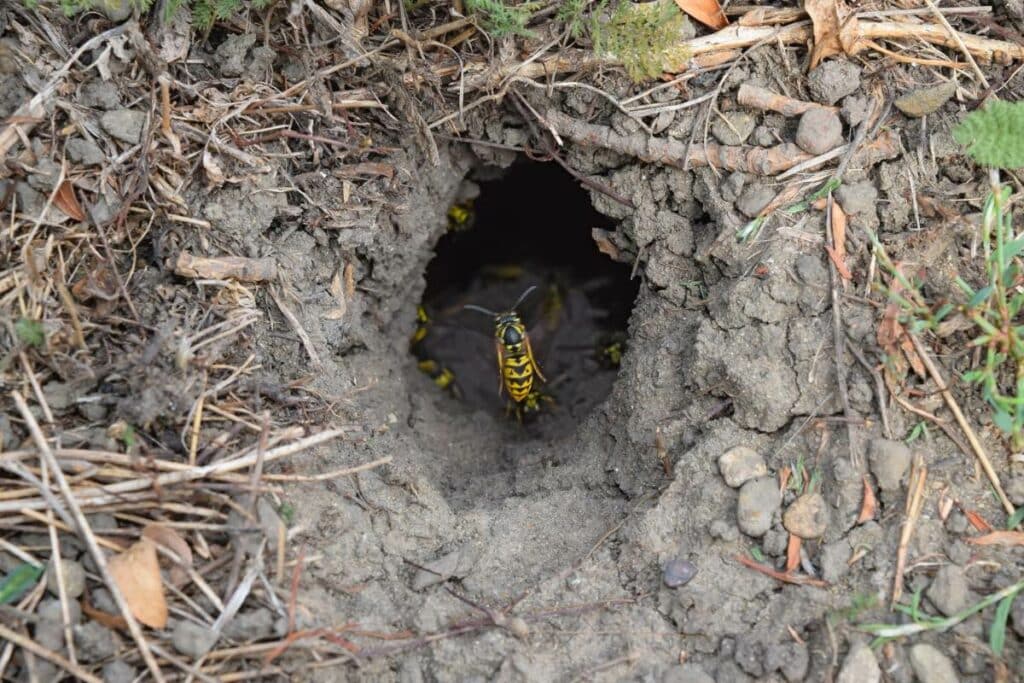
Speaking of their appearance, Yellowjackets often have slender bodies with a defined waist. Most Yellowjackets will have vivid black and yellow markings. Where Ground Nesting Bees are typically harmless, if you find a nest of Yellowjackets on your property, you should be alarmed and consider calling in a professional to help move them on.
We’ll touch on this a bit more later but the same techniques to discourage Ground Nesting Bees may not work for Yellowjackets. This is particularly the case for installing sprinklers. Yellowjackets react to water in a very negative way. Therefore, if you try to use water to evict them, they will become rather aggressive, which can present significant threats.
Ground Nesting Bees Holes
Ground Nesting Bees, or as they are sometimes referred to as miner bees create these underground galleries while the queens live individually and raise their young.
The entries to these nests are small patches or piles of bare soil. Ground Nesting Bees do not form traditional bee hives but numerous females can nest in the same area.
How to Get Rid of Ground Nesting Bees In An Eco-Friendly Way
If you do not want Ground Nesting Bees on your property, don’t worry, there are lots of ways you can move them along without harming them. The most effective way to do this is by changing the soil conditions. As mentioned above, Ground Nesting Bees will settle due to favorable soil conditions.
Therefore, changing them will likely make them reconsider their decision. You could mulch the surface of the garden or increase the density of your lawn. This can be achieved with adequate watering, seeding, and fertilizing.
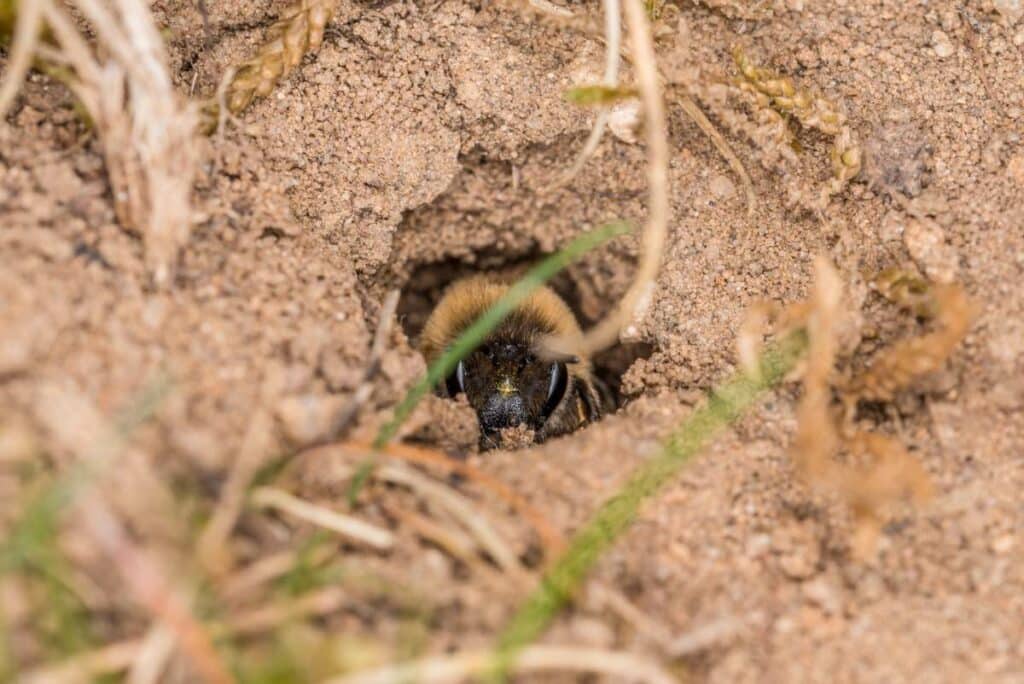
If you change the soil conditions, the Ground Nesting Bees may leave to find a different nesting location that better suits their preferences and needs.
You should never use chemicals to kill Ground Nesting Bees. There is also no need to use pesticides. Ground Nesting Bees play an essential ecological role that includes the pollination of both wildflowers and crop plants.
If you find they are returning to your lawn in large numbers year after year, consider installing a sprinkler in the area. Ground-nesting will always choose dry soil over wet.
Final Thoughts
Bees don’t only storm the skies, collect honey, and reside in hives with their queens; they also live in the ground. Ground Nesting Bees are very common across the globe and are largely unharmful to humans.
If you do not want to host a colony of Ground Nesting Bees on your property, there are lots of ways to encourage them to move on without the use of toxic chemicals.
However, if they are not bothering you too much, you can leave them to go about their business. Remember, they will not stay around for too long, as with the first sight of spring, they will move along.
What’s more, they will benefit your garden and lawn and play an important ecological role. If you are interested in learning more about the fascinating creatures that are bees, learn about 10 ways to save the bees from going extinct.